Fire RCD: selection recommendations, rules and installation diagrams
According to the rules for the design of electrical installations and fire safety standards, the electrical network at the entrance to the apartment or cottage must have a fire protection RCD. This is a conventional differential switch, only having a higher leakage current than classic protection devices against electric shock.
When choosing such a device designed to prevent fire, a number of conditions must be observed. Its installation also involves the fulfillment of specific electrical installation requirements.
Let's understand the features of this device, its scope and key features that you need to pay attention to when choosing this equipment.
The content of the article:
General functions of the differential switch
In household and industrial electrical networks, several types of protective devices are used to prevent fires and electric shock to people. All of them are designed to respond to breakdowns in electrical installations or breakdown of wiring insulation.
The principle of operation, the elements inside and the controlled characteristics they have are different. However, the task is the same everywhere - in case of problems, quickly break the power circuit.
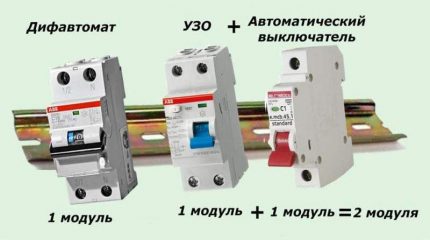
An RCD (differential switch) is an electrical device that breaks the power line when a high leakage current occurs. The latter occurs during the breakdown of the insulating layer in various thermal electric heaters and wires.
If at this moment a person touches the case of the broken equipment, then the electric current will go through it to the ground. And this is fraught with serious injuries. To prevent this, a residual current circuit breaker (residual current circuit breaker) is put in the circuit.
RCD consists of conventional and fire-fighting of:
- housing;
- transformer with three windings;
- EMF relay.
In a normal operating state, an electric current passing through transformer windings forms magnetic fluxes with different poles. Moreover, when they are added, a total zero is obtained. The relay in this state is closed and transmits current.
But when a leak occurs, the balance on the windings is violated. The automatic switch under consideration responds to this by opening the circuit. As a result, the voltage in the network disappears - a broken electrical device is de-energized, and nothing threatens a person anymore. The operation of the RCD takes place literally in a few milliseconds.
The source of fire electrical equipment becomes when:
- short circuits;
- network congestion and / or the electrical installation itself;
- excess leakage associated with degradation of insulation.
In the first two cases, the protective shutdown is performed by a difavtomat (thermal electromagnetic release) or by blowing a fuse. For the third situation, the RCD under consideration with respect to the differential current exists precisely. There are also special insulation monitoring devices, but they are expensive in apartment or house shields rarely installed.
How can an RCD prevent fire?
With electrical injuries, sparks that can cause a fire do not form. But a fire can still occur if a leakage current occurs. The point is wiring and electric current passing through the cables. Initially, the cores are designed for strictly defined voltage values. If these parameters go beyond design standards, then not long before the appearance of open fire.
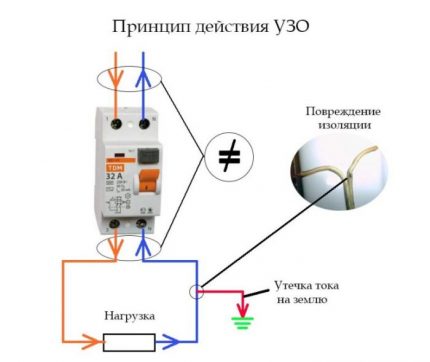
The task of the fire protection RCD is to control this situation and prevent overheating of the wiring. If the insulation is damaged and a leakage current is generated, the protective device simply disconnects the problem line from the network. If there is a differential switch in the circuit, the matter is that the heating of the metal is too strong and the fire does not even reach.
A leakage current within 300–500 mA and a voltage of 220 V is the heat generated equal to the heat generated from a lit household lighter. Such heat generation inevitably leads to ignition of the wiring and everything nearby.
The main function of the class of RCDs under consideration is not human protection, but increased fire safety. To prevent electric shock, after fire protection devices, ordinary devices of a lower leakage current rating are placed in the circuit.
Functionally fire RCD protects:
- Input cable in front of you.
- Posting a line of consumers after yourself.
- Connected electrical equipment when the standard below is not triggered during failures differential switch.
Fire-prevention RCD is part of the cascade protection of the 220 V power supply network. It is not used in smoke control and fire monitoring systems. On the contrary, such protective devices should not be present in them. In certain situations, they can disable such a control system, which is completely unacceptable.
Equipment Selection Criteria
Existing RCD are divided into single-phase and three-phase. In everyday life, only the first devices are used. A line in one phase almost always goes to an apartment and a private house from an electric panel. The differential switch for this is used with two terminals (input plus output), while the three-phase analogs of the terminals for wires have four.
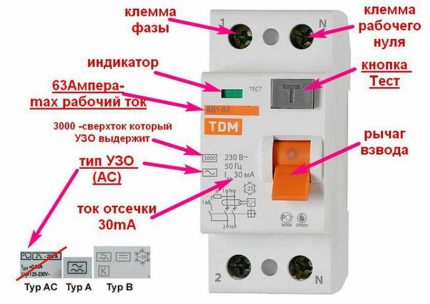
Residual current circuit breakers are:
- electronic;
- electromechanical.
The former are more expensive, but less reliable. In almost all cases, fire protection RCDs are best taken precisely in the electromechanical class. This switch does not need external power. When the supply line breaks, the electronic analogue ceases to work and monitor insulation damage. Plus, during a power surge, it increases the response time.
The two main criteria for choosing a fire protection RCD are the selectivity of the device (the availability of the ability to set a trip delay in it) and the high leakage current parameter (100-300 mA). If one of these conditions is not met, then the system of protective devices in the electrical panel will not work as expected.
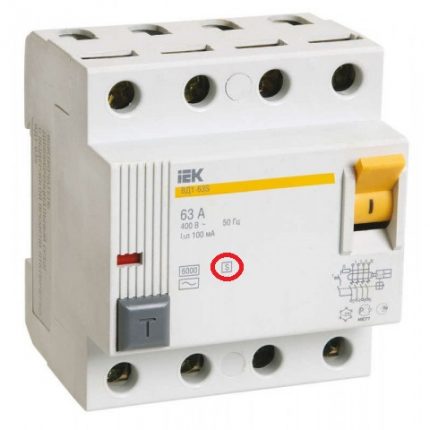
According to the norms, the fire protection RCD should differ at least three times in a larger direction from the lower conventional one in:
- leakage current;
- response time.
If the difference in these parameters is less than three times, then when the downstream differential circuit breaker trips, it will react to the circuit shutdown and the fire fighting device. As a result, it will be more difficult to find out the reason for the shutdown, and without power all consumers in parallel lines that have no problems will remain without power.
Ideally, a cascade circuit from different RCDs should work so that when problems arise, only the device that is closest to the place of insulation breakdown will react. In this situation, only the protected circuit is disconnected. The rest continue to be energized.
With the requirement of a high leakage current parameter, the situation is as follows. In conventional RCDs, it is selected within 10–40 milliamps. The working electric current (maximum consumption of connected electrical appliances in the line) in this case reaches 16–40 A. This is quite enough for lighting and sockets with household appliances.
However, any electrical network has natural leaks. In the project of an intra-apartment or intra-house power system, they are specially calculated in order to choose the right RCD. They must not exceed 1/3 of the leakage current of the selected differential switch for a particular line. Otherwise, the protective device will operate falsely on a regular basis.

If a protective device is selected, as for the usual case, at 10–40 mA, then the mains will be permanently disconnected. In fact, continuously, the RCD will begin to detect leaks, responding to a power off in all power lines of the house.
Circuit breaker installation
RCDs are not designed to track congestion in the power grid, so it must be installed along with a standard “machine” - circuit breaker. So the defense will come out complete in all areas of concern.
The standard connection diagram of protective devices in the electrical panel is as follows:
- The first at the entrance is the machine.
- Then put electricity meter.
- Then the fire protection RCD (100–300 mA) is connected.
- After that, the circuit is divided into several separate consumption lines with an RCD from electric shock (10–40 mA).
In some schemes, the first circuit breaker is changed to switch batch, and less powerful machines are then put on consumer lines. This option also does not contradict the rules.
When connecting the wires, it is important to ensure that the outputs from the RCD are not combined at a common zero and generally do not intersect with other zero conductors or the shield body. After this protective device, the line should immediately go to another RCD or machine, and then immediately to consumers.
After the installation is completed, it is necessary to verify the correct assembly of the entire circuit and the operability of the protective device.
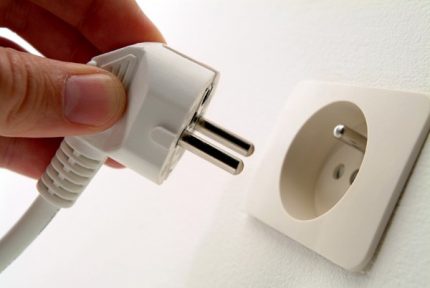
Then the differential switch itself is checked. To do this, on most RCDs there is a button “T” (“TEST”). When it is pressed, the calculated leakage current is simulated, as a result of which the protection should work properly. Moreover, testing should work regardless of whether there is a load or not.
If, when you click on "TEST", the RCD does not disconnect the line, then it is faulty. It is possible that the leak simulation circuit has broken. In this case, the protection device will continue to perform its functions, as laid down in it. However, even such a switch is best replaced immediately. Such a check is recommended to be done once a month.
Conclusions and useful video on the topic
It is necessary to clearly separate the functions with the parameters of the fire and conventional RCD. These devices look and look exactly the same inside. However, the tasks assigned to them are different. To understand all the nuances of these differences, we recommend that you additionally look at the video below.
Appointment of fire protection RCD:
What is a residual current device with a description of the ratings and types:
Why connect household appliances via RCD:
You can always install a fire safety RCD yourself, since the instructions are simple and understandable even to an amateur. It has only two inputs, you only need to connect a couple of wires. It is only important to correctly select the ratings of this device so that it works when necessary. But if there are no skills for such a connection, it is better to invite an electrician.
Do you have experience in self-installation of fire protection RCD? Share your knowledge with visitors to our site, as well as ask questions about the topic of the article in the block below.

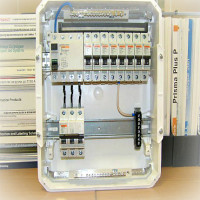 Features of connecting automatic machines and RCDs in the shield: circuits + installation rules
Features of connecting automatic machines and RCDs in the shield: circuits + installation rules 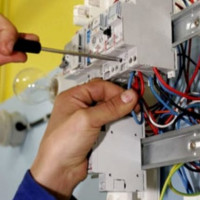 RCD for a water heater: selection criteria + schemes and connection rules
RCD for a water heater: selection criteria + schemes and connection rules 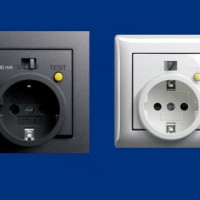 Socket with built-in RCD: device, connection diagram, recommendations for selection and installation
Socket with built-in RCD: device, connection diagram, recommendations for selection and installation 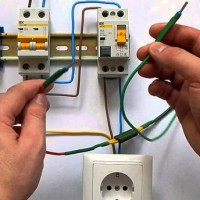 Rules for connecting an RCD to a single-phase network without grounding: the best schemes + operating procedure
Rules for connecting an RCD to a single-phase network without grounding: the best schemes + operating procedure 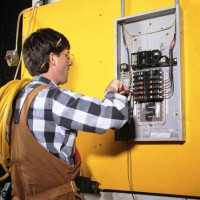 How to connect an RCD: circuits, connection options, safety rules
How to connect an RCD: circuits, connection options, safety rules 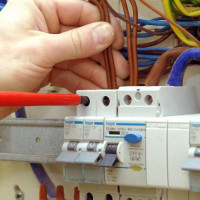 Differential circuit breaker: purpose, types, marking + selection tips
Differential circuit breaker: purpose, types, marking + selection tips  How much does it cost to connect gas to a private house: the price of organizing gas supply
How much does it cost to connect gas to a private house: the price of organizing gas supply  The best washing machines with dryer: model rating and customer tips
The best washing machines with dryer: model rating and customer tips  What is the color temperature of light and the nuances of choosing the temperature of the lamps to suit your needs
What is the color temperature of light and the nuances of choosing the temperature of the lamps to suit your needs  Replacement of a geyser in an apartment: replacement paperwork + basic norms and requirements
Replacement of a geyser in an apartment: replacement paperwork + basic norms and requirements